Airway Adjuncts
Simple Airway Adjuncts: OPA and NPA
Related Video: Understanding Airway Adjuncts
The OPA
This simple device is used to prevent obstruction of the tongue and upper airways in an unconscious patient with no gag reflex when basic techniques (such as head tilt and chin lift) are not effective. The device passes over the tongue to push it away from the posterior pharynx. It can be used with a bag-mask and with suctioning the airway, but it is vital to ensure the head and neck position is maintained.
To place the OPA, the responder:
- Suctions the airway with a rigid suction tip
- Turns the OPA horizontally and rotates it into position as it enters the oropharynx
- May use a tongue depressor to help move the tongue downwards
While OPAs work well when providers are well trained, it is important to keep in mind that they can cause some airway damage. An incorrect size can 1) obstruct the airway by pushing the epiglottis against the larynx or by pushing the tongue posteriorly, 2) cause damage to the lips/tongue, or 3) trigger emesis or laryngospasm.
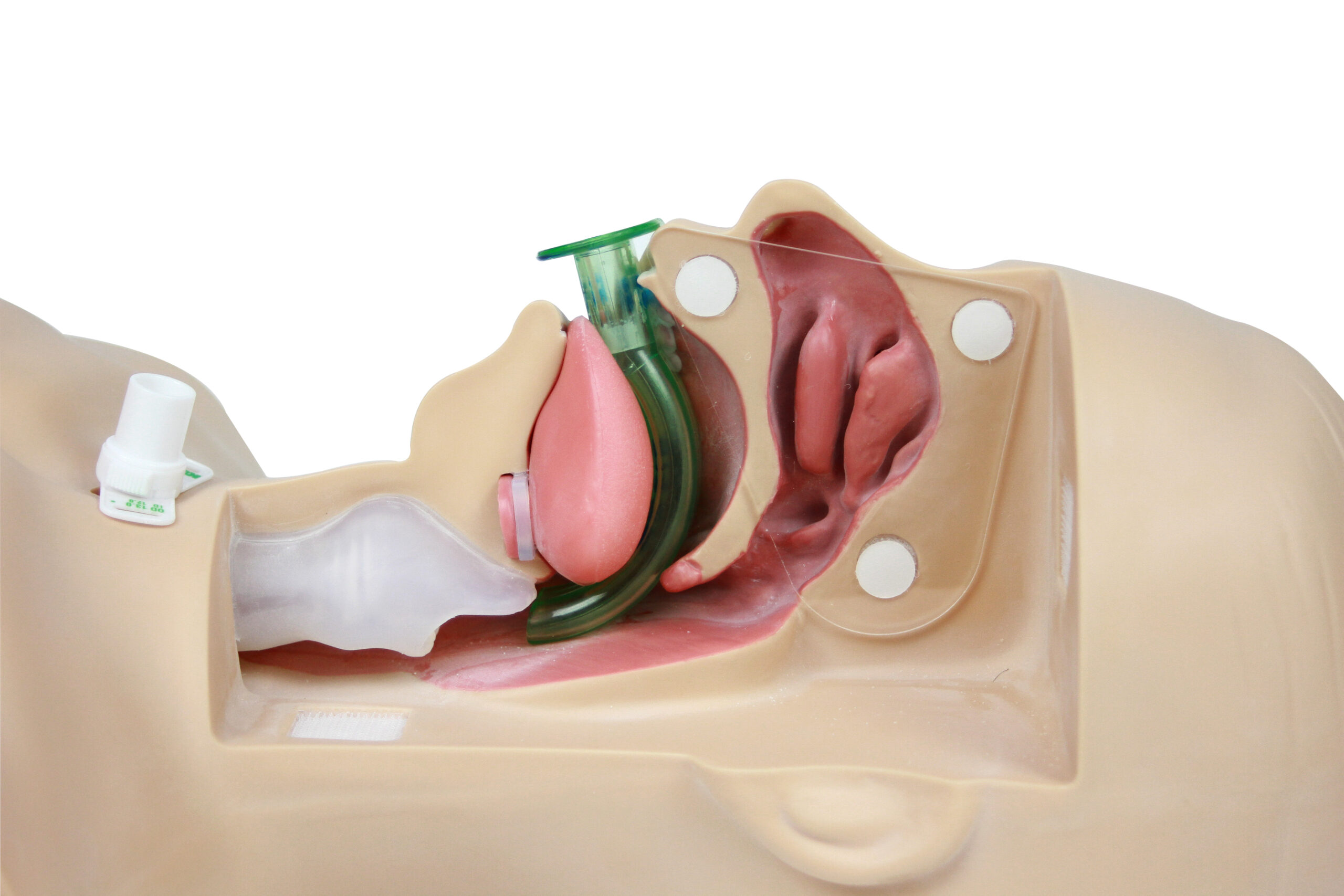
The OPA
The NPA
This device is another simple airway tool that relieves airway obstruction. The tool is made from either plastic or rubber and allows a conduit from the nostril to the pharynx. It can be used in conscious patients (those with a gag reflex) or those with facial trauma as an alternative to the OPA.
To place the NPA, the responder:
- Places lubrication on the device and inserts into the nostril towards its floor and in the midline
- Rotates the device while inserting when needed, which can help ease insertion and ensure the head position allows for the airway to be open
- Continuously checks the patient’s position and ensures the airway is free of fluids that can obstruct the NPA
While NPAs can be very effective when providers are well trained, they can cause some damage.
An incorrect size can 1) injure the airway, 2) cause vagal stimulation, or 3) cause gastric distension when combined with assisted ventilation techniques. The NPA should not be used in patients with a basilar skull fracture or a history of maxillofacial surgeries.
Key Takeaway
Key Takeaway: Use the NPA with caution in patients with a possible craniofacial injury or basilar skull fracture as studies have reported iatrogenic injuries when inserting the nasopharyngeal airway.
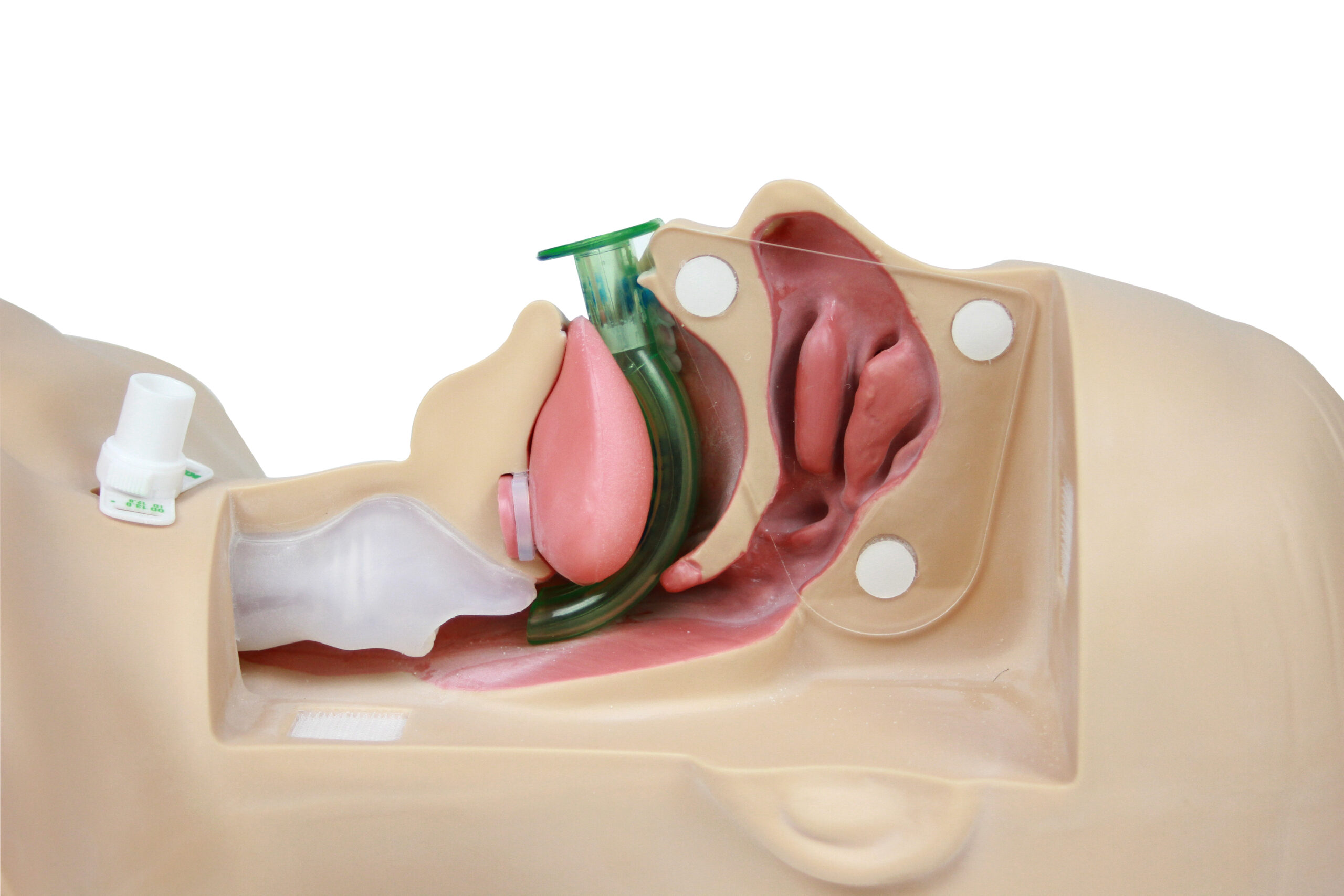
The NPA
Suctioning is an important part of ensuring that the airway remains clear. The team can use suction as needed to effectively clear the patient’s secretions, vomitus, or blood. Suctioning can be done with portable units or units that are mounted on the wall.
A force between −80 and −120 mm Hg is usually required when using suction.
Responders should remember these important aspects:
- Portable units are not as powerful as units mounted to the wall and may not provide adequate suction.
- Units mounted to the wall will provide a suction force of > 300 mm Hg when the suctioning tube is clamped and > 40 L/min of airflow at the end of the tube.
- The force of suctioning should be adjusted based on the patient’s size and intubation status.
- Flexible suction catheters can be used in both the nose and mouth. These are found in sterile packaging and can be used for suctioning the ET tube.
- Stiff suction catheters (e.g., Yankauer suction catheters) are only used via the mouth as they are best for suctioning secretions that are thicker or have solid components.
Key Takeaway
When suctioning, always keep an eye on the patient’s clinical picture and vitals, including pulse, heart rate, and oxygen saturation.
If any of these parameters deteriorate, immediately stop suctioning, and provide oxygen until the patient improves.
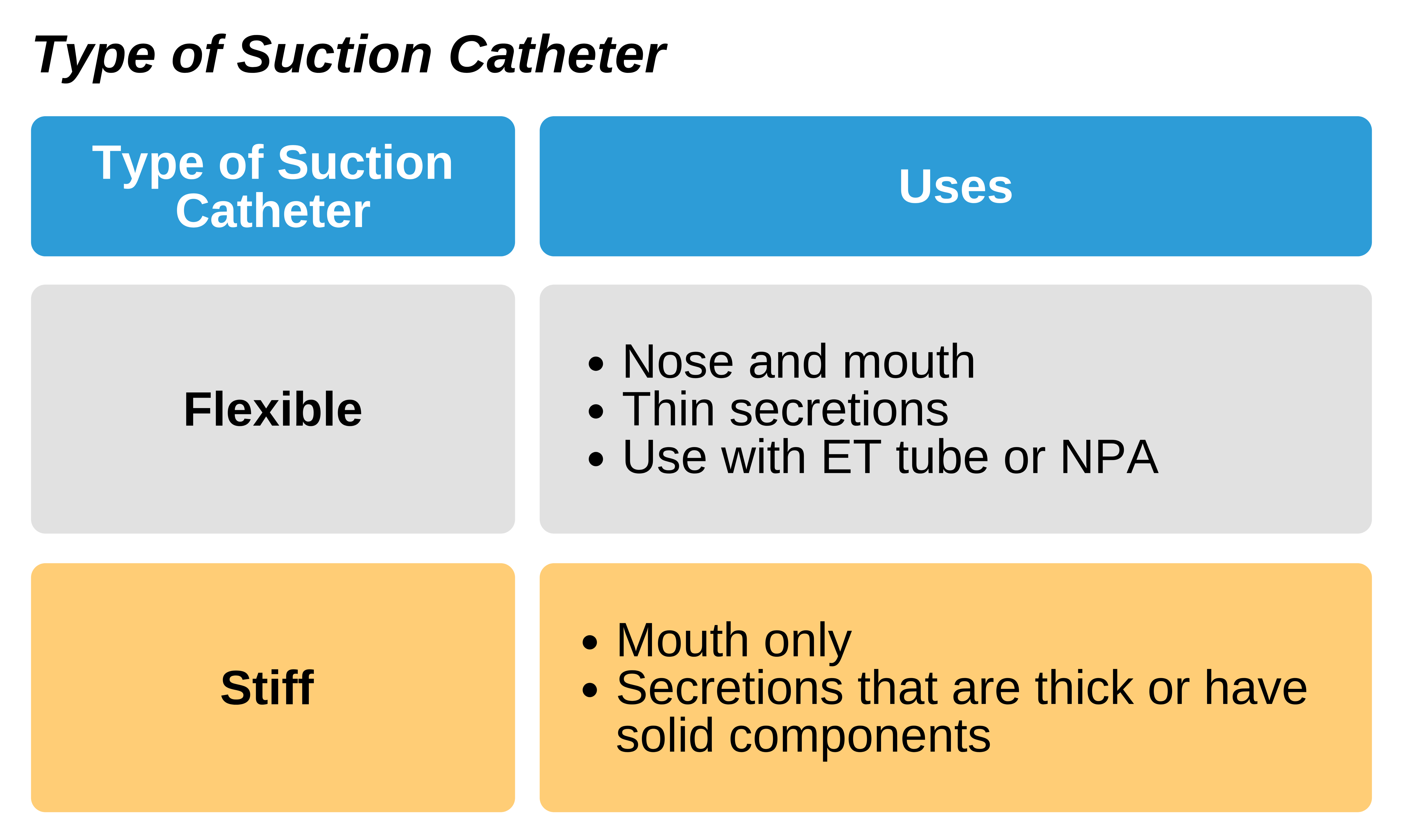
Bag-Mask Ventilations
Bag-Masks
To provide positive pressure ventilations to patients that are not breathing, responders use bag-mask devices. These include a bag that automatically inflates and a non-rebreathing valve. They can be used with either face masks or advanced airways. These masks should be clear so that any regurgitation can be detected quickly. Some bag-masks also provide positive end-expiratory pressure (PEEP).
Related Video: Understanding Bag Valve Mask Usage During CPR
Related Video: Tips for Bagging
Missing Image
Key Takeaway
Gastric distension is dangerous because it can lead to aspiration pneumonia and limit the patient’s ventilation because it decreases lung compliance.
Learning to use bag-masks takes practice and time to perfect. It is generally best to use a bag-mask when there are two or more responders. One responder will ensure the airway is patent and the mask has a good seal, while the other responder will squeeze the bag to give ventilatory breaths.
The bag-mask can be used with either room air or additional oxygen when the automatic inflating bag is used. Since the bag-mask does provide positive pressure ventilations, responders should be aware that it can lead to gastric distension.
When using the bag-mask, responders:
- Use an OPA quickly if the patient cannot protect the airway (i.e., cannot cough or has no gag reflex)
- Use the adult bag, which is between 1 and 2 L and can provide a tidal volume of about 600 mL
- Should be able to see visible chest rise as well as maintain adequate oxygen and CO2 levels for the CPR patient
- Use the head tilt-chin lift maneuver when using a bag-mask attached to a face mask, as this is the best method for maintaining a good seal
- Makes a “C” using their index finger and thumb while the remaining fingers are used to lift the chin (without compressing the soft tissues). This hand positioning helps to maintain the head tilt-chin lift positioning and a good seal
- Are aware it is best to use a bag-mask with two responders
- Are not concerned with tidal volumes or mask seals if the bag-mask is attached to an advanced airway
The bag-mask can be used during CPR both in the hospital setting and in the community.
Advanced Airways
When choosing the most suitable advanced airway, responders must consider their specific training, licensure, and readily available equipment.
Options for these airways are:
- Esophageal tracheal tube
- Endotracheal (ET) tube
- Laryngeal mask airway (LMA)
- Laryngeal tube
Once an advanced airway is placed, CPR dynamics change. With two responders, one will continuously give chest compressions at a pace between 100 and 120 compressions/minute. The other responder will manage ventilations at a rate of a single breath every 6 seconds (or 10 breaths/minute). There should not be a pause in compressions to deliver the breath. Responders should still change roles after about 2 minutes to minimize fatigue and ensure good-quality compressions. The same applies to more than two responders, with a new responder rotating in every 2 minutes to take over compressions.

Endotracheal Tube
The ET tube is a sterile one-use tube with a cuff that allows direct delivery of highly concentrated oxygen at a set tidal volume to ensure good ventilation. Its placement requires skill as the vocal cords must be visualized to ensure correct positioning.
There are certain advantages of the ET tube:
- Ensures airway patency
- May protect the patient from aspiration and its consequences
- Allows concurrent suctioning in the trachea
- Allows good positive end-expiratory pressure (PEEP)
- Allows an alternate route of delivery for medications when venous or osseous access is not available
It is important to remember that using the ET tube to administer drugs is generally not as effective as the use of venous or intraosseous access because the delivery and pharmacology are not as predictable. Therefore, the ET tube administration of vasopressors and antiarrhythmics should be used only when there is no good alternative access.
Medicines that can be given via ET tube include:
- Atropine
- Epinephrine
- Lidocaine
- Naloxone
- Vasopressin
Some tips for ET tube medication administration include:
- The dose should be between 2 and 2.5 times the IV dose.
- Medication should be mixed with 5–10 mL of sterile water or normal saline. (For lidocaine and epinephrine, it may be better to use normal saline.)
- ET tube medication administration should be followed by one or two breaths to improve delivery throughout the airway.
Generally, ET tube placement is recommended when:
- Ventilation is not effective during cardiac arrest with bag-mask ventilation
- Oxygenation is inadequate in an awake patient with respiratory distress
- The airway is unprotected (e.g., unconscious or areflexic patient)
While many clinicians consider ET tube placement the gold standard for airway management in cardiac arrest, it requires skill and must be done quickly. Poorly trained responders attempting placement can cause complications, and there are other advanced airways available. Currently, any of the other advanced airways, and even bag-mask ventilation in the appropriate patient, have similar survival rates and preservation of long-term brain function. Responders should use the advanced airway with which they are most skilled.
Since failed attempts and poor placement of the ET tube can lead to severe complications, responders using ET tubes should maintain a high level of skill. There are regulations set forth by medical and governmental bodies regarding which responders can place ET tubes and for which patients. Responders should meet the following criteria:
- Fully trained
- Perform ET tube placement regularly
- Perform continuing education regarding ET tube placement
- Meet licensure requirements by medical and governmental bodies to place ET tubes
- Participate in the quality improvement program to monitor and reduce complications
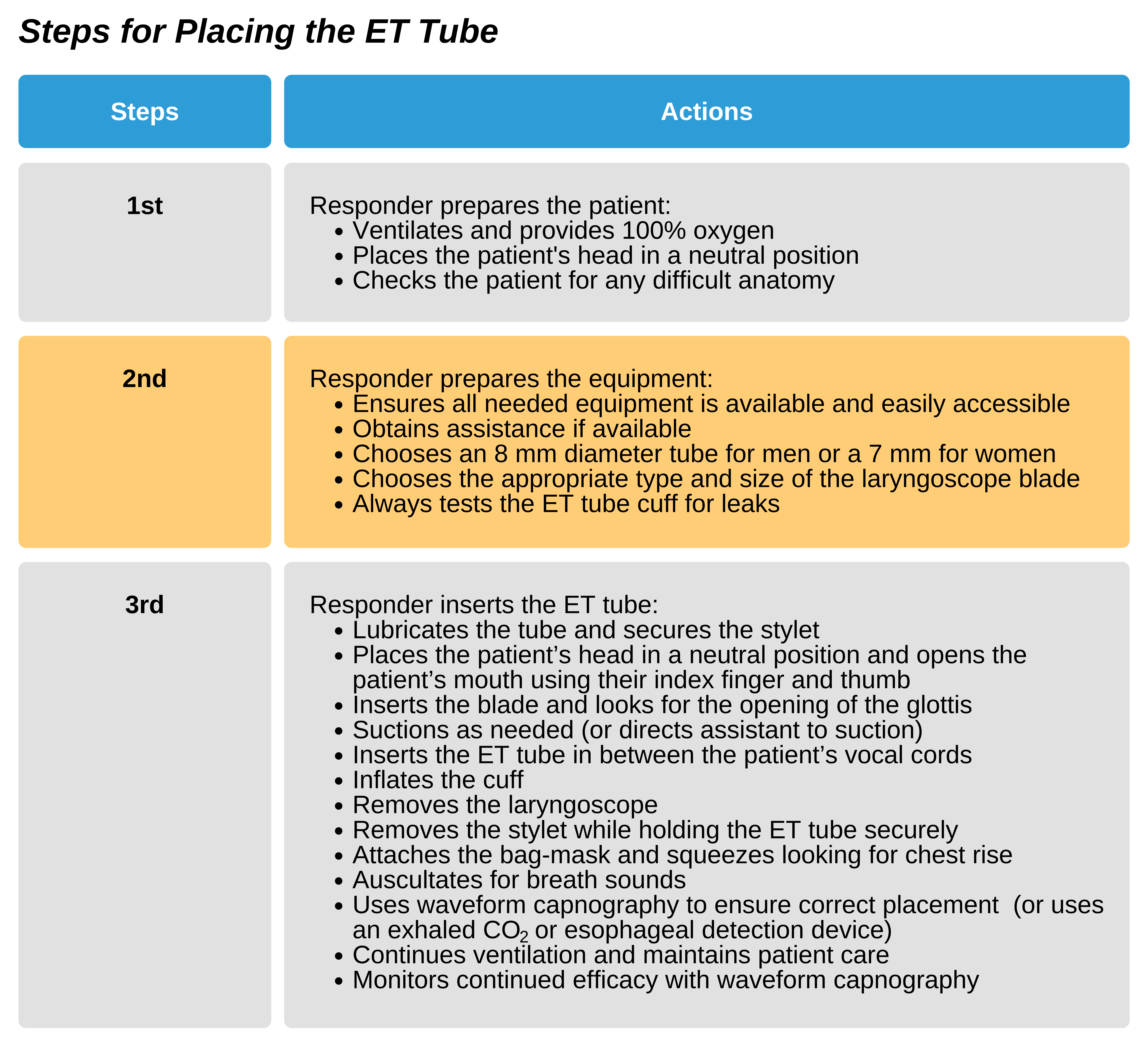
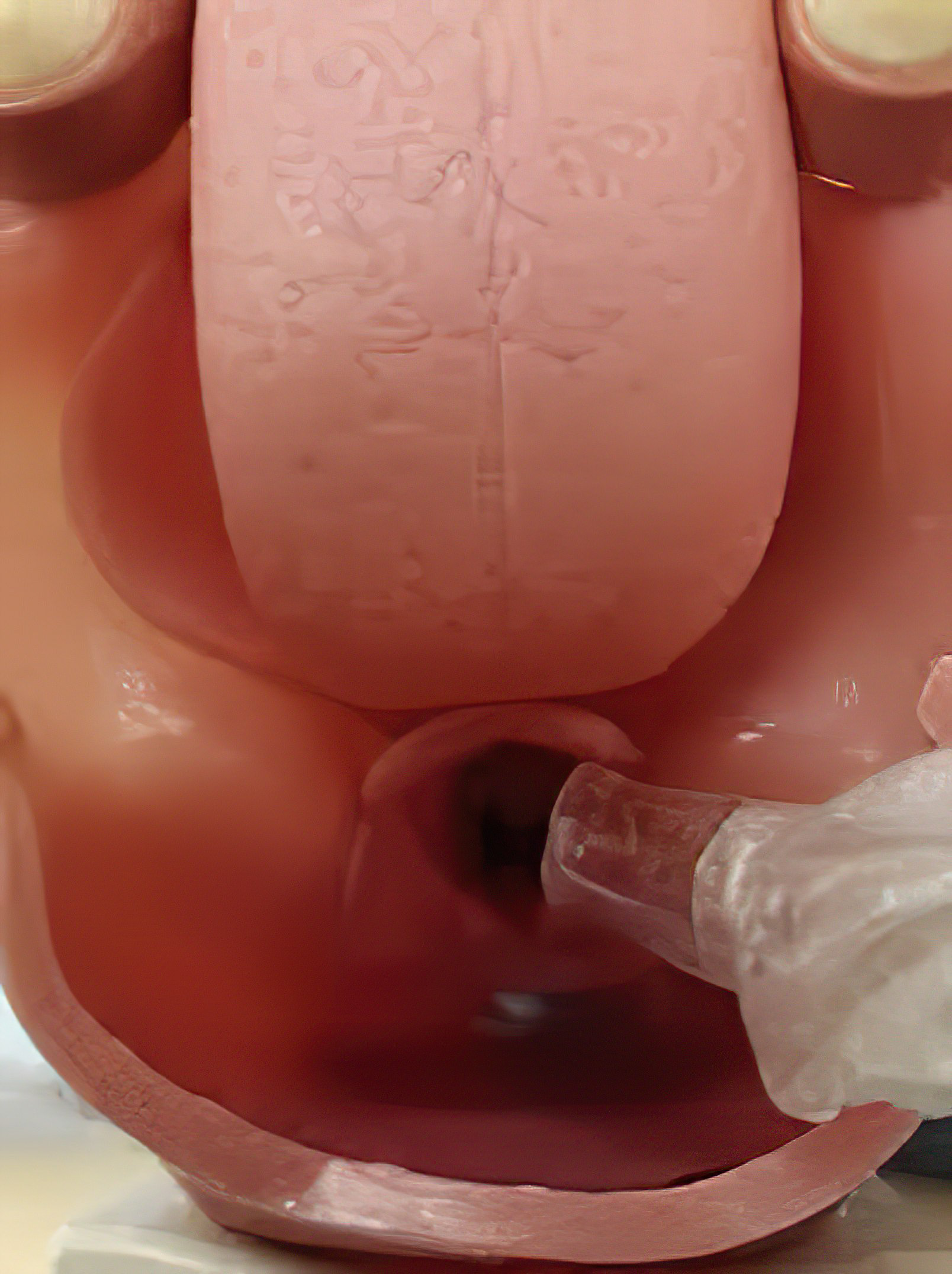
Vocal Cords During ET Tube Placement; Correct Placement of ET Tube
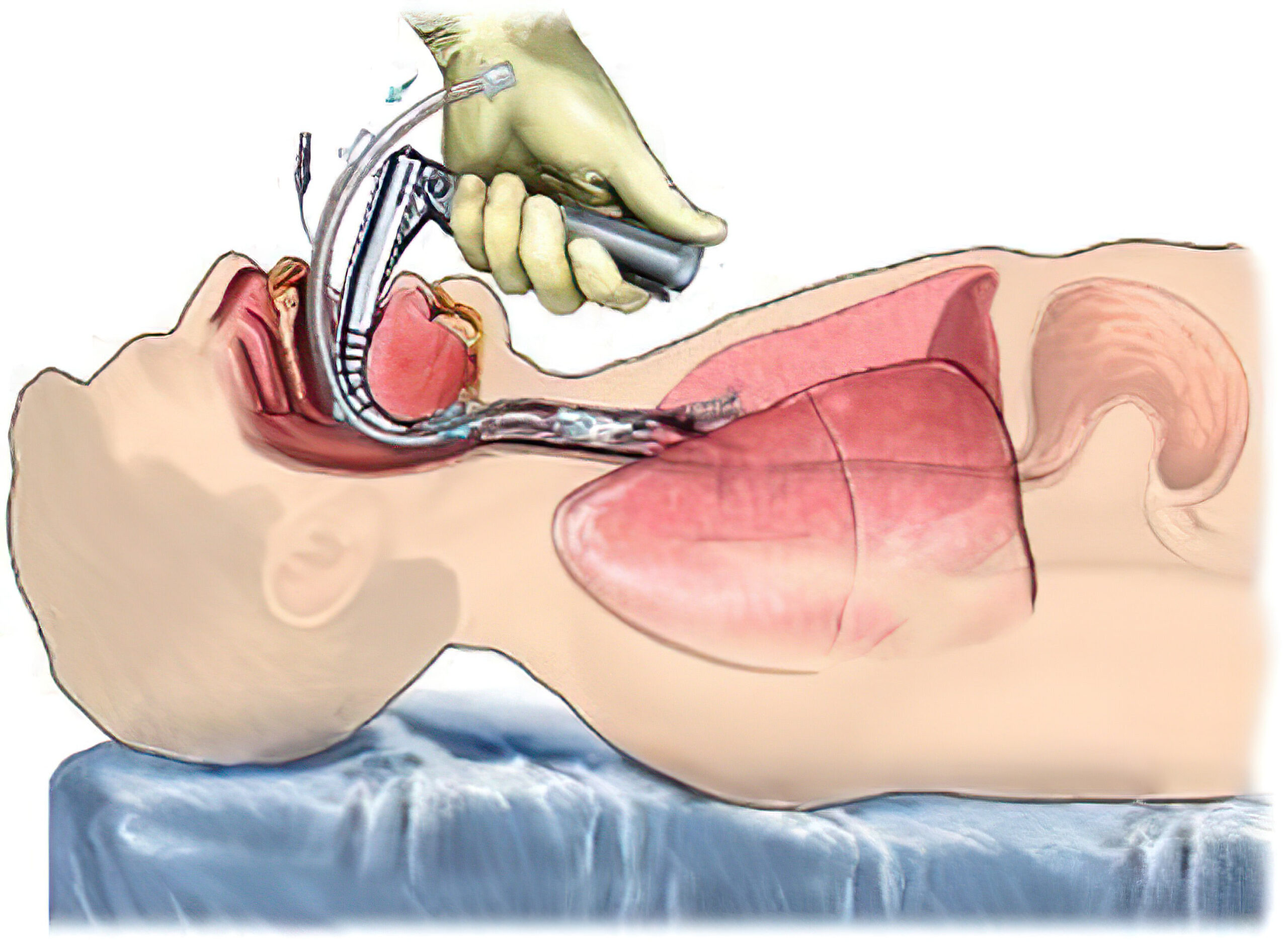
Vocal Cords During ET Tube Placement; Correct Placement of ET Tube
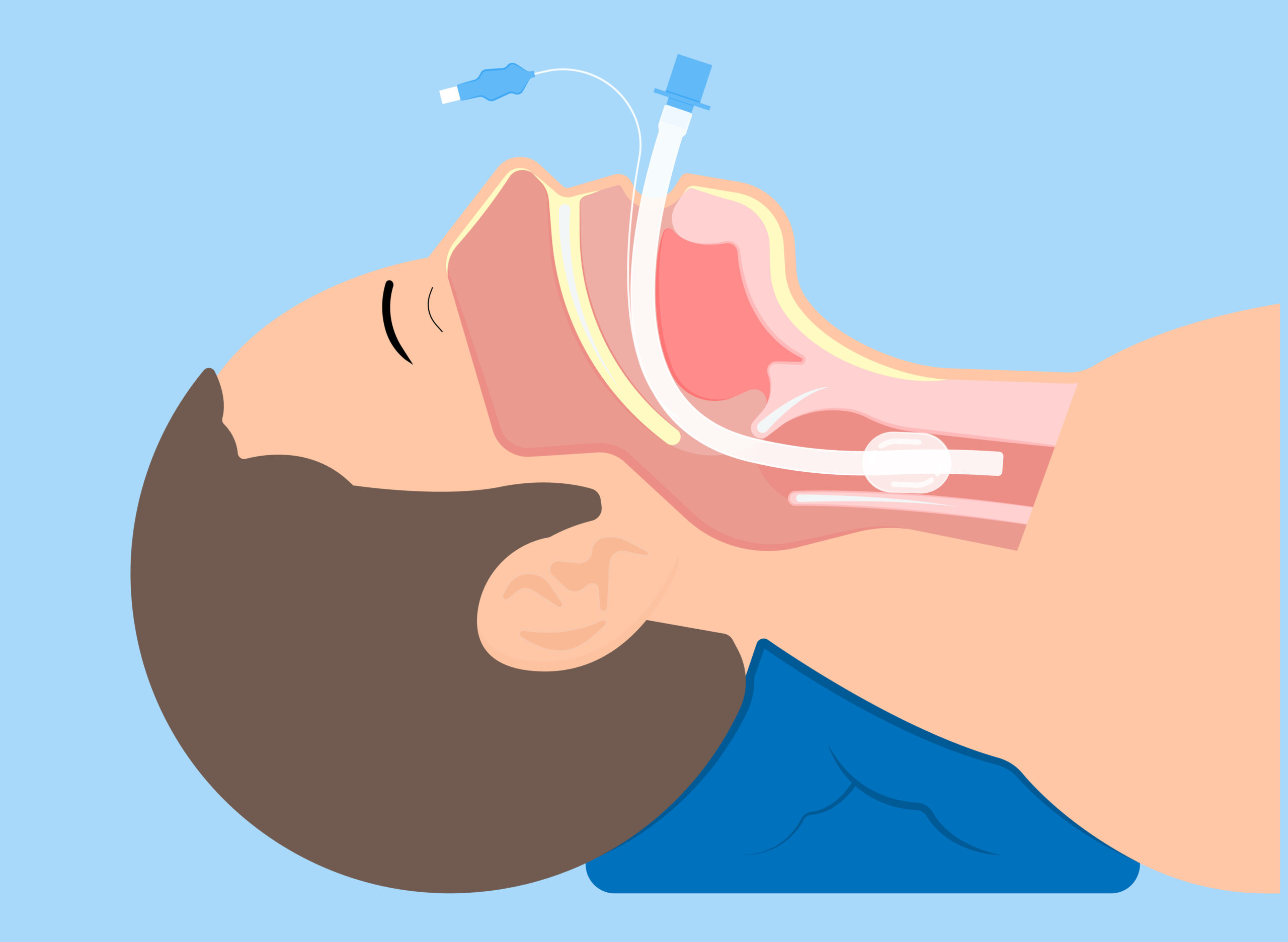
Endotracheal Tube Placement
While successful ET tube placement is important during resuscitation, excellent chest compressions and quick defibrillations are always the most important components of the resuscitation effort. Consequently, all team members, regardless of whether they place the ET tube, should be aware of the steps of placement to ensure a seamless transition between CPR without an advanced airway and CPR with an advanced airway. Having all team members understand how to continue CPR around the time of ET tube placement is vital to an effective resuscitation.
Limiting CPR Interruptions
As noted above, complications can occur when unskilled responders attempt to place an ET tube. Additionally, placing an ET tube is often more difficult outside of the hospital setting and is more susceptible to accidentally dislodging. The responder placing the tube should have all equipment set up and be ready to look for the vocal cords and place the tube as soon as there is a pause in compressions. This should take no longer than 10 seconds.
As soon as the ET tube is placed, chest compressions should be restarted. If the responder is not able to place the ET tube on the first try, a second try can be attempted. The responder can also attempt another advanced airway at this time.
Confirming ET Tube Placement
There are several ways to confirm correct ET tube placement. The first is full visualization of the ET tube passing through the vocal cords. Following this, the responders should check for chest rise and auscultate breath sounds when ventilation is started.
Waveform capnography is also useful in ensuring correct placement. Alternatives to this include exhaled CO2, an esophageal detection device (EDD), or ultrasound imaging. A chest X-ray can also be obtained for a stable patient to ensure correct placement and to look for any lung problems. However, imaging takes too much time to be used for confirmation in the acute setting, which relies on rapid clinical assessment.
After confirming placement, the tube depth should be checked, and the tube secured with quality tape or commercial devices made for this purpose. This will greatly reduce the risk of accidental dislodging. Finally, the team ensures the tape or device does not compress the neck, which can limit the venous outflow from the brain.
ET Tube Complications
There are various complications associated with ET tube placement, including:
- Lip, tongue, and cheek laceration
- Damage to the teeth
- Pharyngeal and tracheal laceration from the stylet or ET tube
- Vocal cord injury
- Esophageal-pharyngeal perforation
- Aspiration
- Epinephrine or norepinephrine release, leading to cardiac instability
Incorrect Placement
Esophageal Intubation: incorrect placement into the esophagus will lead to a lack of ventilation and oxygenation. The patient will become anoxic and may develop permanent brain damage or asystole if this is not recognized early.
Bronchial Intubation: incorrect placement into one main bronchus can cause hypoxemia as one lung will be underinflated. Checking for symmetrical chest rise and auscultating the chest for bilateral breath sounds can help to identify this issue as waveform capnography will not detect this. To rectify this issue, responders should:
- Deflate the cuff
- Withdraw the ET tube 1–2 cm
- Confirm placement clinically using chest rise, auscultation, and waveform capnography
- Reinflate the cuff
- Secure the ET tube
- Recheck clinical signs for confirmation of correct placement
Related Video: One Quick Question: How Do You Calculate Tube Depth?
Related Video: One Quick Question: How Do You Correct a Right Mainstem Intubation?
Laryngeal Mask Airway (LMA)
The LMA is a supraglottic airway that comprises a tube with a mask-shaped ending. It can be used instead of an ET tube and provides similar ventilation in about 73–98% of patients in cardiac arrest. This number does indicate that some patients will not be effectively ventilated with an LMA and will need an alternate advanced airway.
There are certain advantages of the LMA:
- It reduces the risk of regurgitation compared to the bag-mask
- It reduces the risk of aspiration
- It is a simpler advanced airway to master compared to the ET tube
- It is a good alternative to ET tube in patients with a neck injury or in whom a tube cannot be placed appropriately or easily accessed
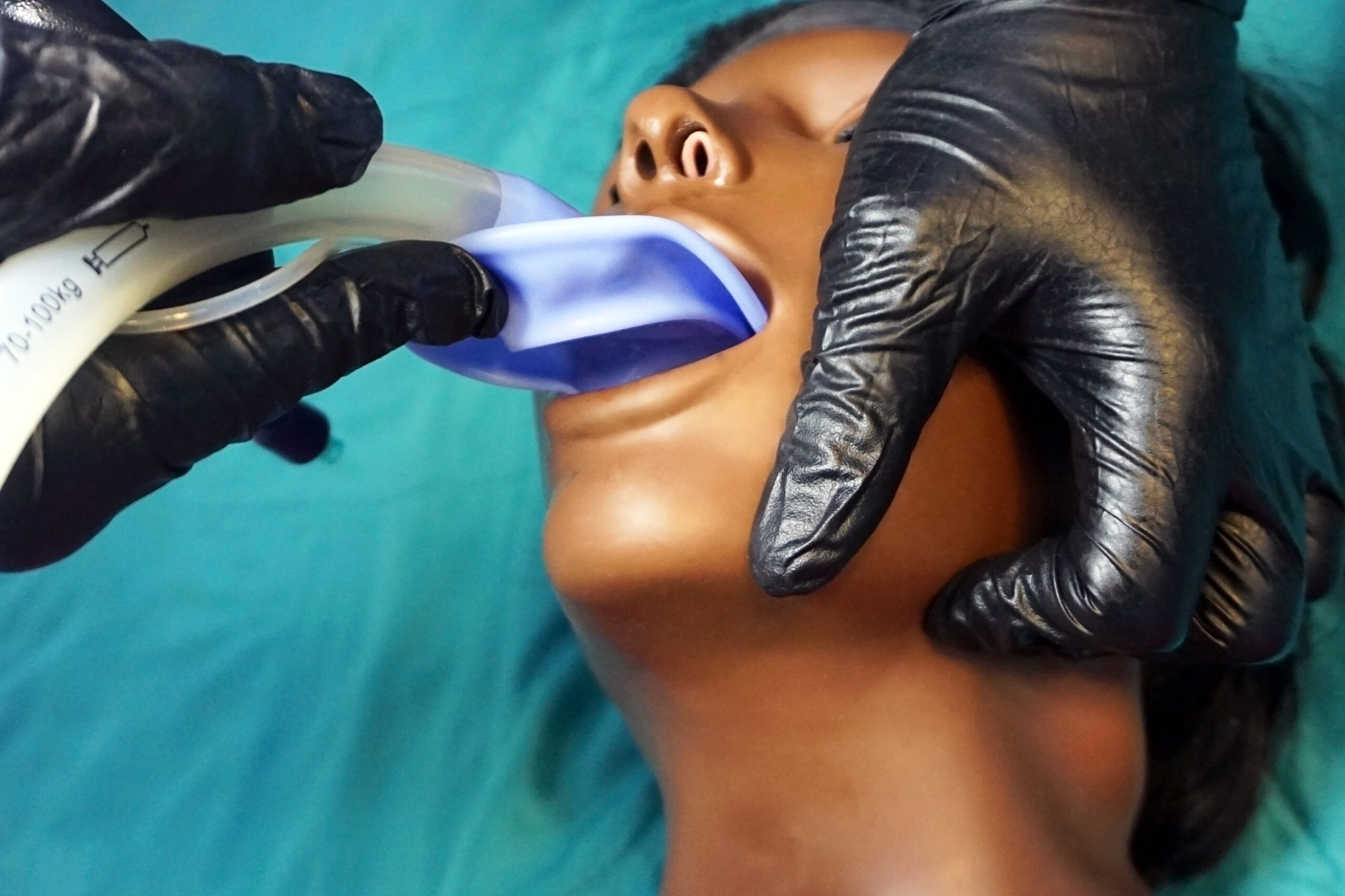
Laryngeal Mask Insertion
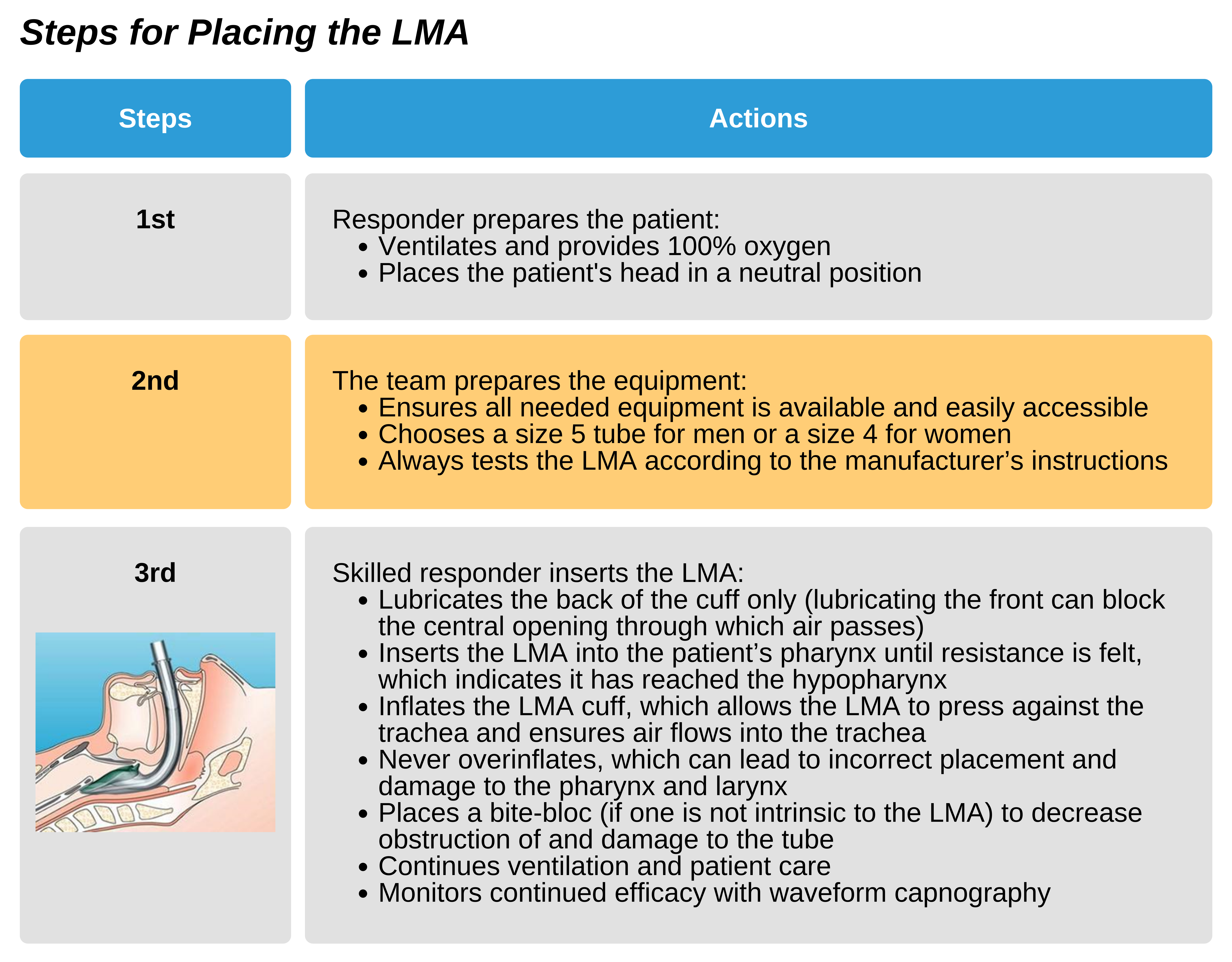
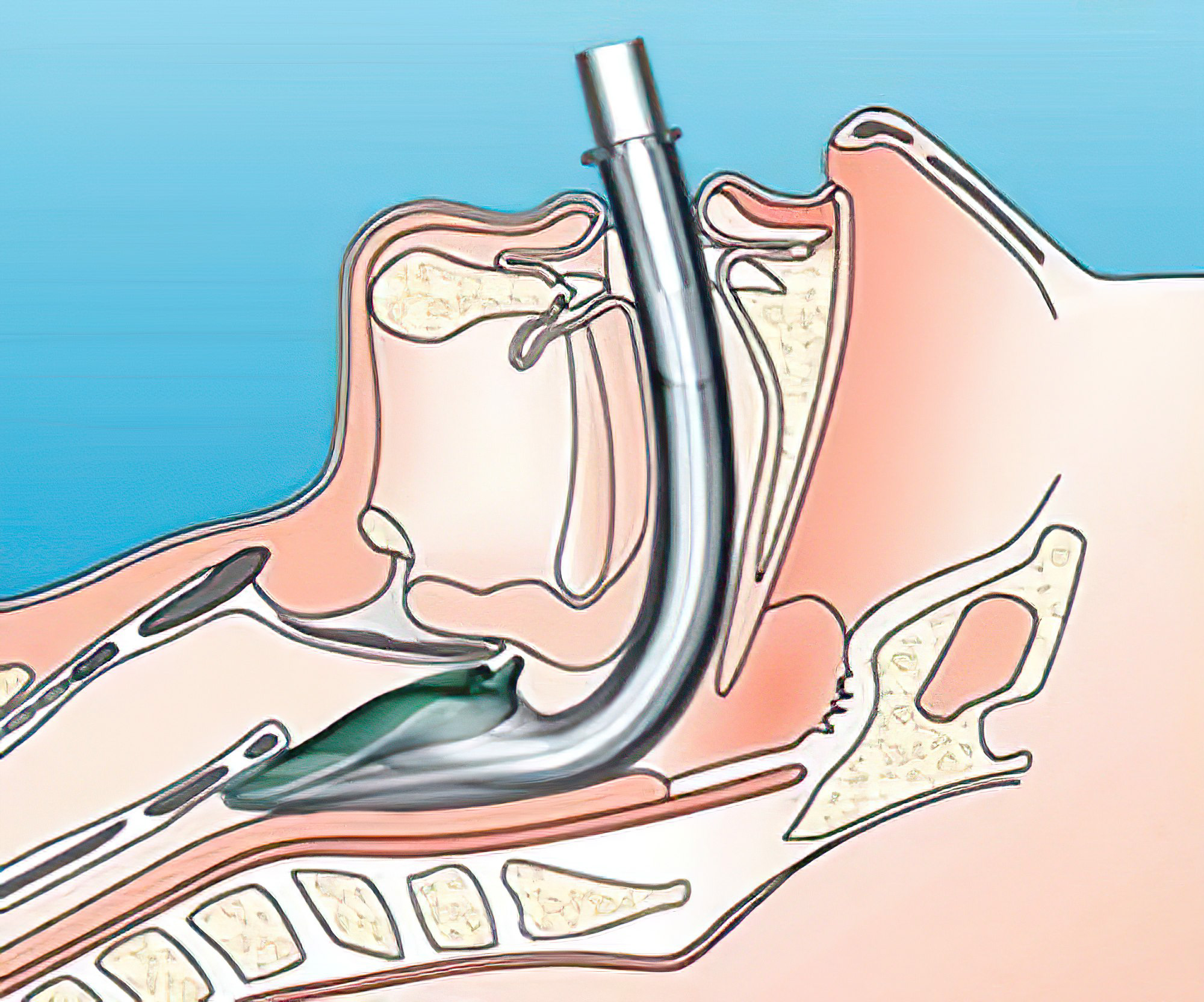
LMA Placement
LMA Tips
- When placing the LMA, cricoid pressure should not be given as studies show this can obstruct placement of the LMA, reducing the ability to ventilate the patient adequately.
- A slight swelling at the cricoid cartilage of the neck can help confirm the LMA is properly placed.
- Continuous air leakage when giving three or more breaths suggests malposition, and the LMA placement should be rechecked.
- Moving the head of the patient or suctioning the pharynx can lead to the inadvertent displacement of the LMA.
Limitations of the LMA
Some patients cannot be adequately ventilated using the LMA. It is vital for the team to always have an alternative advanced airway for this reason.
Laryngeal Tube
This is an alternative supraglottic device that can be used by experienced responders. There are two versions: one with a single lumen and another with two lumens. While there is no long-term data on the use of the laryngeal tube during cardiac arrest, studies show 85–97% success in adequately ventilating cardiac arrest patients outside of the hospital. The laryngeal tube is quite easy to learn to use and is very portable, making it useful in out-of-hospital arrests. Additionally, the tube decreases the chance of aspiration and reliably provides adequate ventilation.
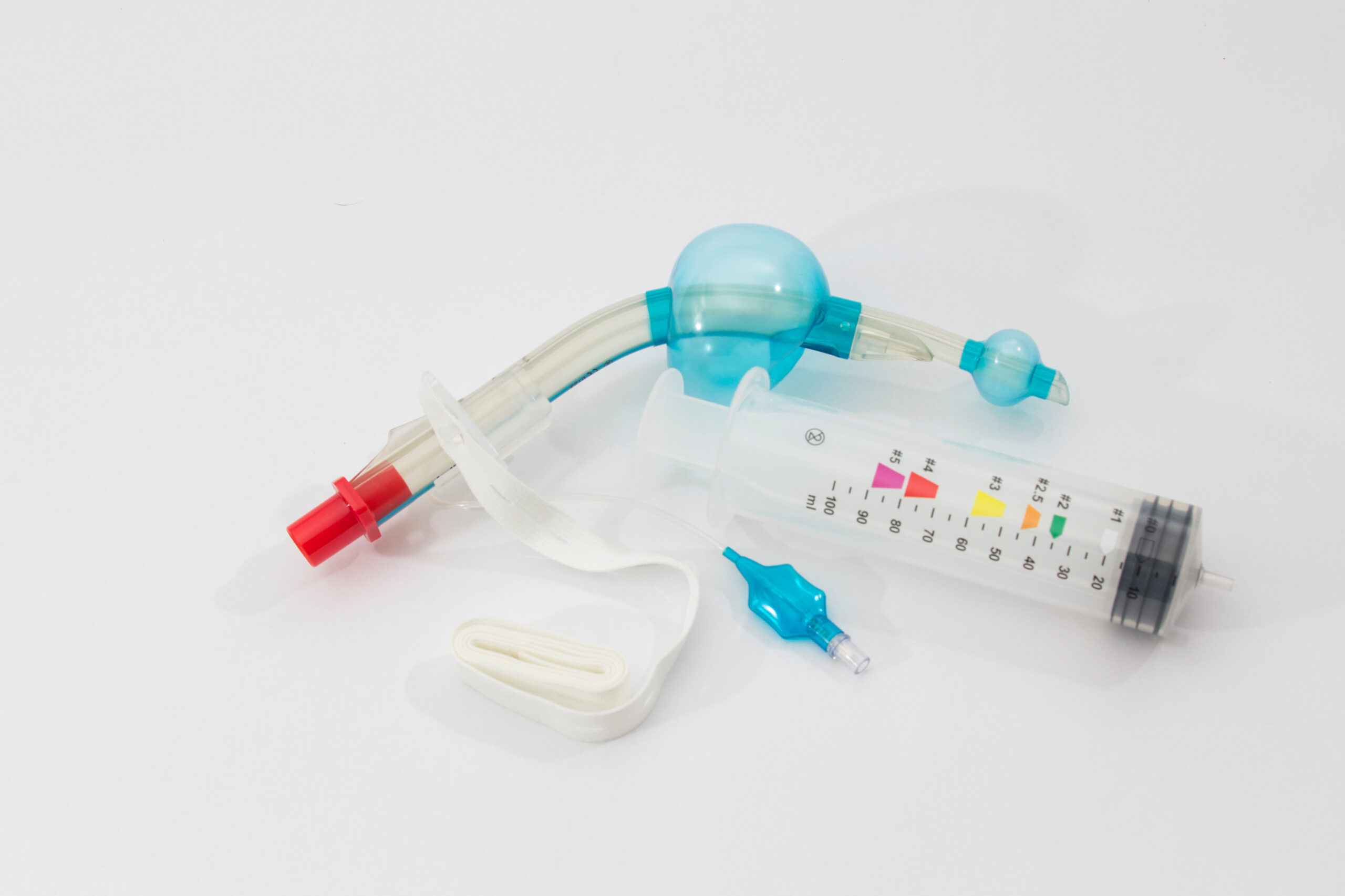
Laryngeal Tube
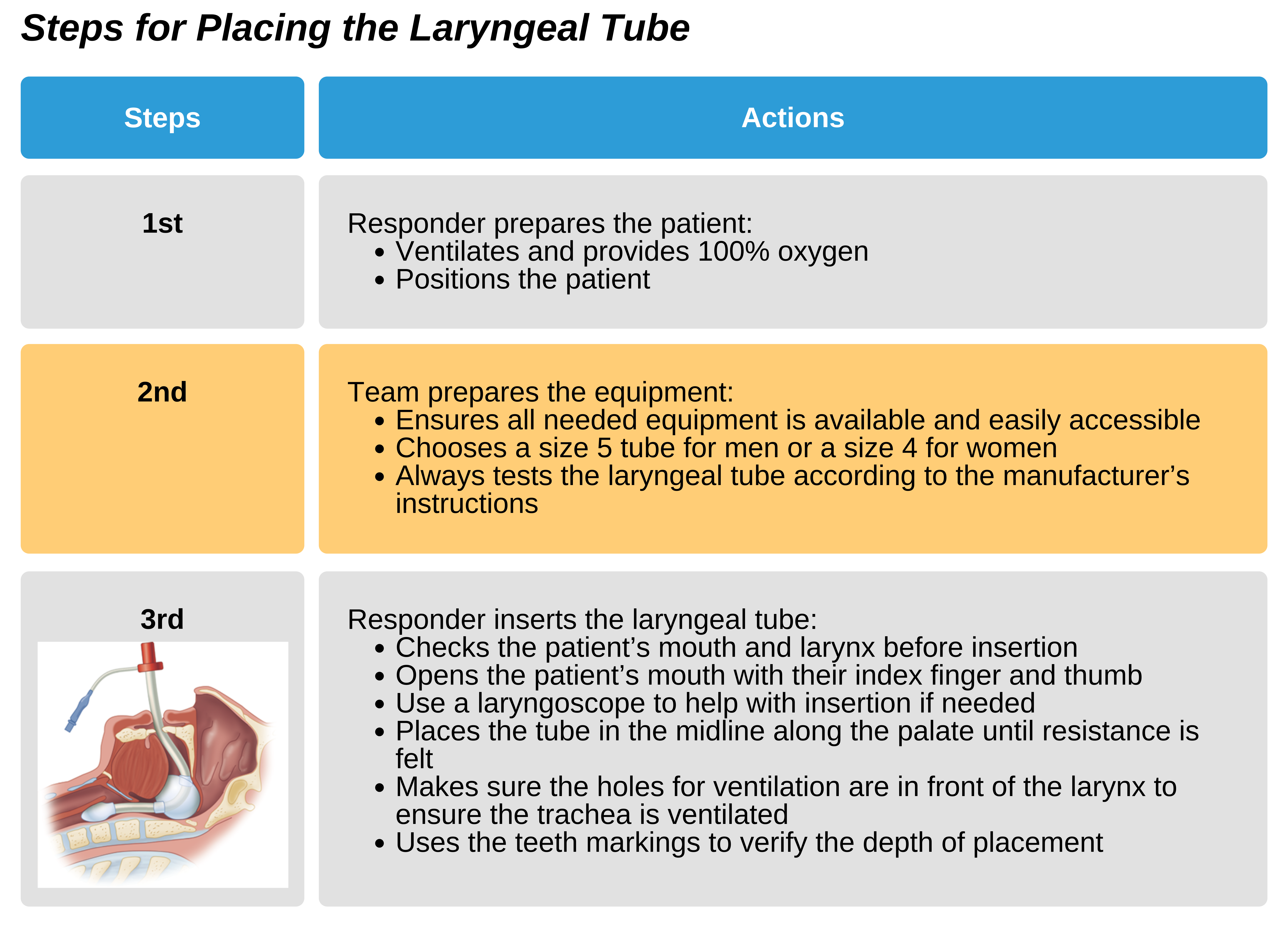

Laryngeal Tube Insertion
Esophageal-Tracheal Tube
This is an alternative supraglottic tube that can be used by trained providers. It uses two inflatable cuffs that allow ventilation regardless of intubating the trachea or esophagus. If the tube enters the esophagus, the side opening allows ventilation near the vocal cords and trachea. If entering the trachea, ventilation occurs at a distal opening.
Studies indicate that a wide range of responders can effectively use the esophageal-tracheal tube to ventilate patients. It is a more reliable and secure source of ventilation than the bag-mask. Additionally, training is relatively simple compared to that required for the ET tube. Yet, complications can occur with placement, and all responders using this device should be adequately trained.
Complications of the esophageal-tracheal tube include trauma to the esophagus and permanent brain damage or death if the position of the distal opening is incorrectly identified.
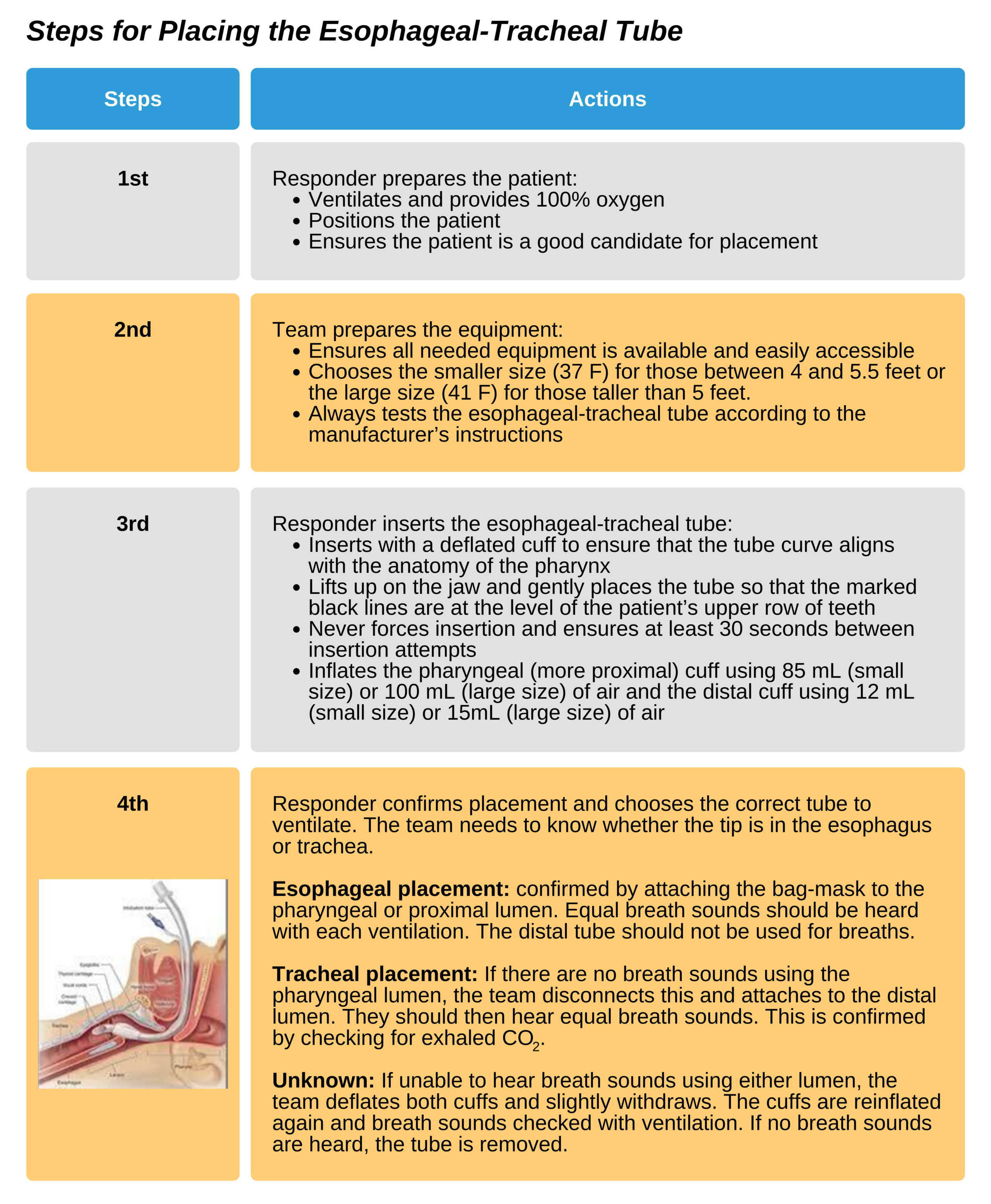
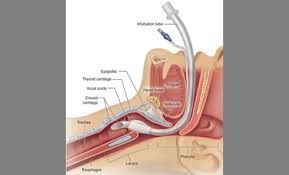
Esophageal-Tracheal Tube
Cricoid pressure is never used when placing the esophageal-tracheal tube because this can obstruct insertion.
Unacceptable candidates for the esophageal-tracheal tube include:
- Patients with gag or cough reflex
- Age 16 and under
- Height 4 feet or under
- Patients with an esophageal disease (diagnosed or suspected)
- History of caustic ingestion
Limitations of the esophageal-tracheal tube
- The device can cause damage to the esophagus
- The device can only be used in individuals over 4 feet and comes in only two sizes
Cricoid Pressure
Cricoid pressure is often used to help with intubation in patients who are not in cardiac arrest, as it can limit the risk of aspiration of gastric contents. Unfortunately, when used in the patient with cardiac arrest, it can limit ventilation as well as make intubation more difficult. As there is no comprehensive literature review regarding the use of cricoid pressure in the patient with cardiac arrest, its use is not currently recommended.
Clinically Assessing Advanced Airway Placement
Following placement of the advanced airway, an immediate assessment of correct placement should occur. This can be done in conjunction with continuous CPR delivery. Responders should check for bilateral chest rise, auscultate for breath sounds in both lung fields as well as the epigastrium. A correctly placed advanced airway should produce breath sounds in the lung fields but not in the epigastrium. When placing an ET tube, the vocal cords should be seen during placement. If correct placement is not assured, the advanced airway should be removed and bag-mask ventilation restarted until another attempt can be made.
Medical devices used to confirm advanced airway placement
Confirmation of the correct placement of an advanced airway is based on assessing ventilation via exhaled CO2. The body removes excess CO2 from the blood via the lungs. This exchange occurs at the alveolar-capillary level. Essentially the amount of CO2 in the alveoli (alveolar PCO2) should be equivalent to that of the arterial PCO2 when ventilation is matched with pulmonary vascular perfusion. In this way, the exhaled CO2 is used to determine ventilation over time.
It is best if responders assess ventilation clinically and with medical devices. This is important immediately after placing the advanced airway and whenever the patient is transported. There is no single assessment that has the best sensitivity and specificity for ET tube placement. However, using waveform capnography continuously is considered the best method for evaluating placement and continued monitoring of the ET tube both outside and within the hospital.
Exhaled CO2 Detection
Non-waveform CO2 detectors are easy to use and can help determine correct ET tube placement if waveform capnography is unavailable.
However, these methods are not more accurate than visualizing the vocal cords during intubation or listening for breath sounds. Additionally, the use of CO2 detection has not been well studied for the placement of the other supraglottic advanced airways.
Key Takeaway
Waveform capnography should be used in conjunction with clinical assessments to determine the correct placement of the ET tube and other supraglottic airways.
Limitation of End-tidal CO2 Detection
False Positives: These devices can detect CO2 even in the hypopharynx and esophagus.
This can occur because of gastric distension in a patient who recently drank a carbonated beverage or other extrapulmonary sources of CO2.
False Negatives: These devices may fail to detect CO2 even in the trachea.
This can occur because of significant cardiac arrest with poor CPR outcome. Such a false negative can result in unneeded reattempts at reintubation, which can lead to more complications. Therefore, responders should not use CO2 detection as the only assessment of ET tube placement.
Esophageal Detection
These devices determine if the advanced airway is in the esophagus. They tend to work by clinically indicating that the tube is in the esophagus due to either the inability to aspirate or the bulb does not expand due to collapse of the esophagus. These devices are not more accurate than clinical assessment in the cardiac arrest patient.
Limitation of Esophageal Detection
A false positive can also occur with devices used to detect esophageal intubation. The causes for this include excess tracheal secretions (e.g., aspiration, pulmonary edema), right main stem bronchial intubation, a very pliable trachea (e.g., in a patient with morbid obesity patient or a 3rd-trimester pregnancy), or an acute asthma attack.
Airway Security
Once the placement of the advanced airway is confirmed, responders should note the tube depth (by marking it at the level of the upper teeth) and securing it with quality tape or a commercial device made for this purpose. Also, the tape or device must not compress the patient’s neck, which can limit venous outflow from the brain.
As advanced airways can become dislodged during transportation or with movement of the head, it is critical that the advanced airway is monitored closely during transportation. Responders should always reconfirm correct placement after any patient transport.
Avoiding Excess Ventilations
When a patient receives CPR, perfusion to the lungs is decreased. As a result, the patient will require lower tidal volume and respiration rates to maintain a ventilation-perfusion match. It is critical not to cause hyperventilation with rapid breaths or large volume breaths. Hyperventilation can lead to increased thoracic pressures, reduced cardiac venous return, and may limit cardiac output and the patient’s chances of survival.
Key Takeaway
Hyperventilation can lead to increased thoracic pressures, reduced cardiac venous return, and diminished cardiac output. Additionally, it can increase the risk of aspiration due to vomiting.
When the patient has a maintained pulse, ventilations should be given once every 6 seconds with either an advanced airway or a bag-mask. The pulse should be checked in two-minute intervals and take between 5 and 10 seconds.